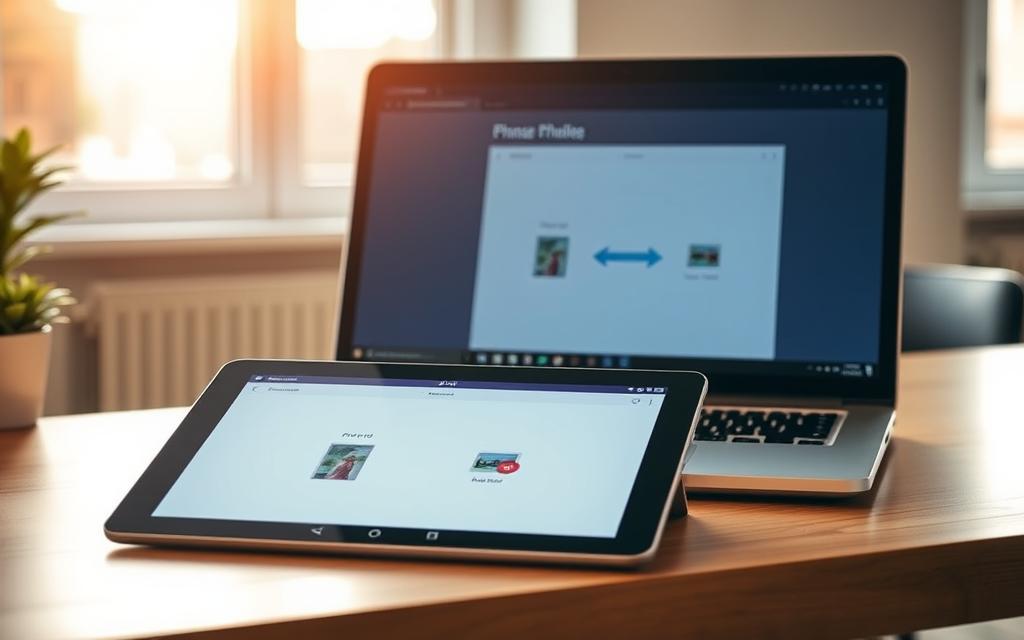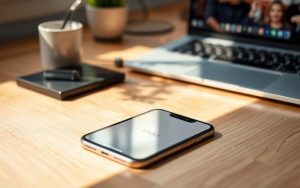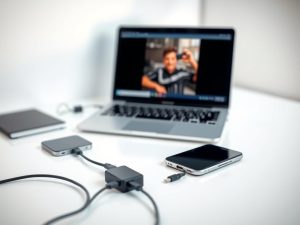Table of Contents
Moving files between devices doesn’t have to be complicated. Whether you’re handling personal memories or business documents, efficiency and security are key. This guide explores seven straightforward methods to help you achieve seamless file sharing.
For bulk file handling, MobileTrans stands out as a reliable solution. It simplifies the process, ensuring your data remains safe. Other methods include USB connections, cloud storage, and Bluetooth, each offering unique advantages.
Compatibility is essential. These methods work seamlessly across Windows and Mac systems, making them accessible to everyone. Even if you’re not tech-savvy, these user-friendly approaches ensure a smooth experience.
Stay tuned for step-by-step instructions with visual guidance to make the process even easier. Let’s get started!
Introduction to Transferring Photos to Your Android Tablet
Managing your digital memories across devices is easier than ever. Whether you’re organizing personal photos or work-related files, keeping them accessible on your android device ensures convenience and efficiency.
Different methods offer varying speeds and benefits. For instance, a wired connection is often faster, while wireless options like cloud storage provide flexibility. Choosing the right approach depends on your needs.
Security is another key factor. Personal photos may require less protection than sensitive work files. Always consider the level of security needed for your data.
Compatibility is crucial. Devices running Android 6 or later come with built-in tools like Quick Share, simplifying the process. Ensure your computer and android device are updated for seamless integration.
Preparation is essential. Charge your devices and update their software before starting. This ensures a smooth experience, whether you’re using a cable or wireless method.
How to Transfer Photos from PC to Android Tablet Using a USB Cable
Using a USB cable is one of the most reliable ways to move files between devices. It’s fast, secure, and doesn’t require an internet connection. This method works seamlessly on Windows systems and ensures your data stays intact during the process.

Step 1: Connect Your Android Tablet to the PC
Start by plugging the USB cable into your device and the computer. Ensure both ends are securely connected. Your Windows system should recognize the tablet automatically. If not, check the cable or try a different USB port.
Step 2: Enable File Transfer Mode on Your Tablet
Once connected, unlock your tablet and swipe down the notification panel. Tap on the USB option and select File Transfer or MTP mode. This allows your computer to access the tablet’s storage. For Samsung or Google devices, the process is similar but may have slight variations.
Step 3: Copy and Paste Photos via File Explorer
Open File Explorer on your computer. Locate your tablet under This PC or Devices. Navigate to the folder where your photos are stored. Select the files you want to move, right-click, and choose Copy. Then, paste them into the desired location on your tablet.
For large collections, use batch selection by holding Ctrl while clicking multiple files. Organize your photos in custom folders for easier access later. Always eject your device safely to prevent data corruption.
“A wired connection ensures faster transfer speeds, especially with USB 3.0 cables.”
By following these steps, you can efficiently manage your files and keep your photos organized. Whether you’re using USB 2.0 or 3.0, this method remains a top choice for reliable data sharing.
Transfer Photos Wirelessly with Cloud Storage Services
Cloud storage services offer a seamless way to manage your files across devices. Whether you’re syncing personal memories or work documents, these platforms provide flexibility and security. Popular options like Google Drive, Dropbox, and OneDrive make it easy to access your data from anywhere.
Automated backup configurations ensure your photos are always safe. Offline access is ideal for frequent travelers, while sharing permissions allow collaborative work. Compression settings optimize storage, and two-factor authentication adds an extra layer of security.
Uploading Photos to Google Drive from Your PC
Start by opening your browser and navigating to Google Drive. Sign in with your account credentials. Click the New button and select File Upload. Choose the photos or folder you want to upload from your computer.
For large libraries, consider using the Google Drive app for faster uploads. It also supports automatic syncing, ensuring your files are always up to date. Bandwidth considerations are important for large collections to avoid delays.
Downloading Photos to Your Android Tablet
Open the Google Drive app on your tablet. Navigate to the folder where your photos are stored. Tap the three-dot menu next to the file and select Download. The files will be saved to your device’s local storage.
“Cloud services like Google Drive simplify file management with their user-friendly interfaces and robust features.”
| Service | Free Storage | Max File Size |
|---|---|---|
| Google Drive | 15GB | 5TB |
| Dropbox | 2GB | 2TB |
| OneDrive | 5GB | 250GB |
By leveraging these tools, you can efficiently manage your digital assets. Whether you’re working with personal or professional files, cloud services provide a reliable solution.
Quick Share: A Fast Way to Send Photos from PC to Android
Quick Share simplifies file sharing between your PC and Android device. This feature ensures fast, secure, and hassle-free transfers. Whether you’re moving personal memories or work documents, Quick Share is designed to save time and effort.

To get started, ensure your Windows PC and Android tablet meet the system requirements. Both devices must run Windows 10/11 64-bit and Android 6.0 or later. Bluetooth and Wi-Fi should be enabled for seamless connectivity.
Setting Up Quick Share on Your PC and Tablet
First, download the Quick Share app on your PC and tablet. Ensure both devices are connected to the same network and within 16 feet of each other. Pair them by following the on-screen instructions. This step ensures a stable connection for smooth file sharing.
For enhanced security, configure privacy settings in the app. You can control device visibility by selecting options like Everyone, Contacts, or Your devices. This ensures your files are shared only with trusted devices.
Sending Files with Drag-and-Drop or Right-Click
Quick Share offers two simple methods for file transfers. You can drag-and-drop files directly into the app window. Alternatively, right-click on the file and select Send with Quick Share. Both methods are equally efficient and user-friendly.
“Quick Share’s drag-and-drop feature makes file transfers effortless and intuitive.”
If you encounter issues, check your Wi-Fi and Bluetooth connections. Restarting the app or devices often resolves common problems. For more troubleshooting tips, visit the official Quick Share support page.
Quick Share is a reliable solution for managing your files across Windows and Android devices. Its intuitive interface and robust features make it a top choice for seamless file sharing.
Using Bluetooth for Photo Transfers (When Other Options Aren’t Available)
Bluetooth remains a reliable option for file sharing when other methods aren’t available. While it may not be as fast as USB or cloud services, it’s a practical solution for quick transfers between your computer and Android device.
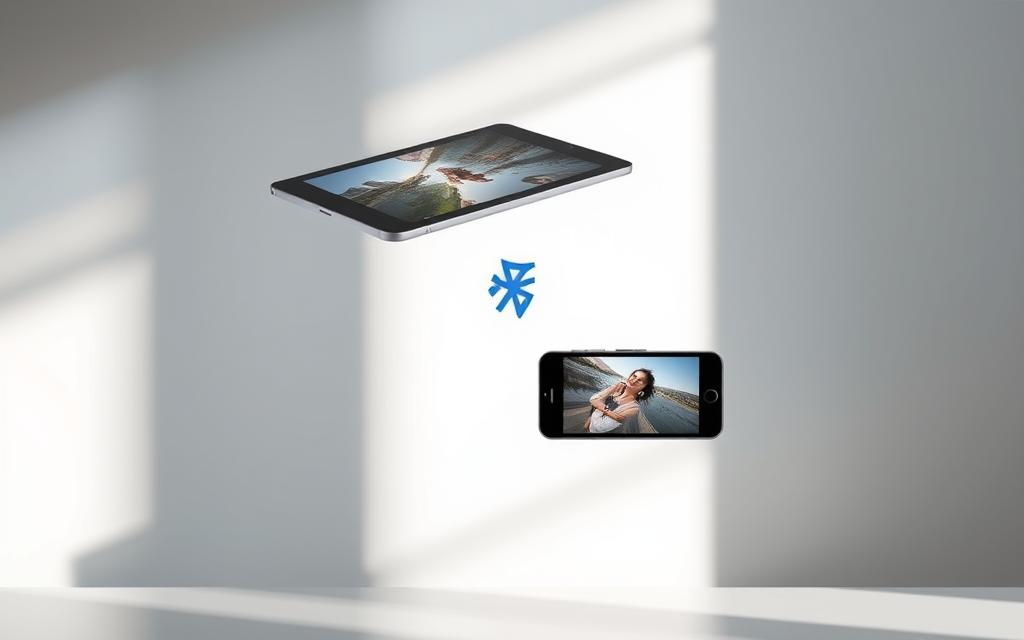
One key limitation is its range, which typically maxes out at 16 feet. This ensures a stable connection but requires devices to be in close proximity. Pairing is straightforward, with a verification code ensuring secure linking between devices.
Before starting, check Bluetooth versions for compatibility. Older devices may not support newer protocols, leading to slower speeds or failed transfers. Batch transfers are possible but can be time-consuming for large files.
Energy consumption is another factor. Bluetooth uses less power than Wi-Fi, making it ideal for conserving battery life. However, extended use can still drain your device’s battery.
If pairing fails, ensure both devices are discoverable and within range. Restarting Bluetooth or the devices often resolves issues. For added security, avoid using Bluetooth in public spaces to prevent unauthorized access.
“Bluetooth’s simplicity and wide compatibility make it a go-to solution for quick file sharing.”
For legacy devices, consider alternative tools like file compression apps to reduce transfer time. While Bluetooth may not be the fastest option, its versatility ensures it remains a valuable tool for managing your files.
Emailing Photos as an Alternative Transfer Method
Emailing files is a straightforward alternative for sharing data between devices. While it may not be the fastest option, it’s accessible and requires no additional tools. Most email platforms, like Gmail, Outlook, and ProtonMail, support file attachments, making it easy to send photos and documents.
However, email services often have attachment limits. For example, Gmail restricts attachments to 25MB. To bypass this, you can upload larger files to Google Drive and share a link instead. This method ensures your data is delivered without size constraints.
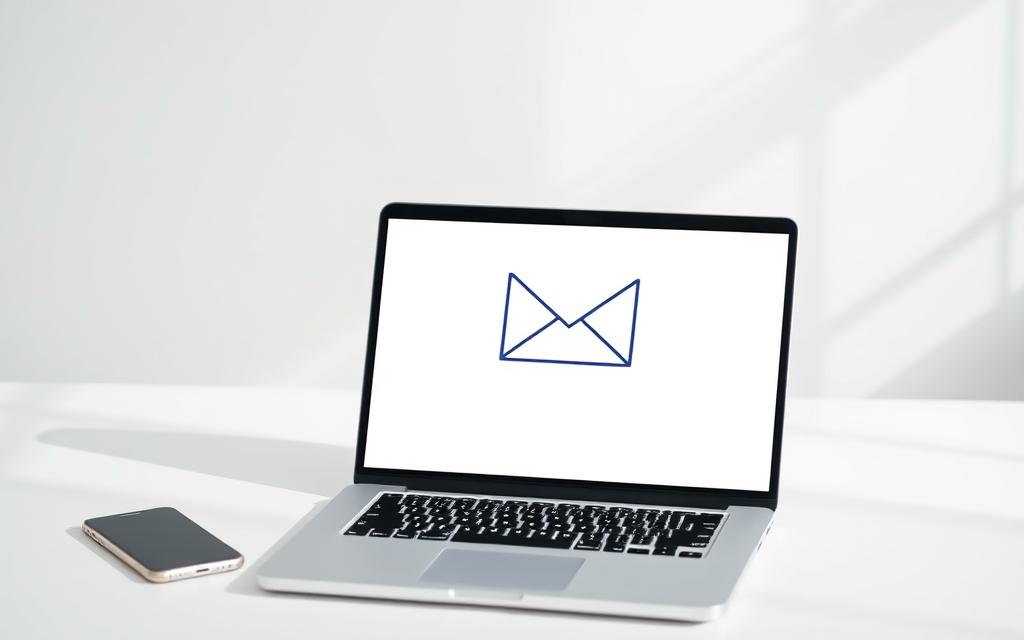
When choosing a platform, consider features like encryption and metadata preservation. ProtonMail offers end-to-end encryption, ideal for sensitive files. Outlook integrates seamlessly with OneDrive, while Gmail’s browser interface is user-friendly.
For large collections, ZIP compression is a practical solution. It reduces file size and keeps your photos organized in a single folder. Automated forwarding rules can also streamline the process, especially for recurring transfers.
“Email remains a versatile tool for sharing files, especially when other methods aren’t available.”
Mobile clients like Gmail’s app simplify the process further. Configure your settings to ensure smooth transfers between devices. Always consider legal implications when sharing sensitive content, as email is not always the most secure service.
For more tips on managing your files, check out this comprehensive guide. It covers additional methods and best practices for seamless file sharing.
Conclusion
Efficiently managing your digital assets across devices ensures seamless accessibility and security. Whether you’re handling personal memories or professional files, choosing the right method saves time and effort. Tools like MobileTrans simplify the process, supporting over 18 file types with a 4.5/5 user rating.
For speed and reliability, USB connections are ideal. Cloud services like Google Drive offer flexibility, while Bluetooth works as a backup when other options aren’t available. Always verify data integrity after transfers to ensure your photos remain intact.
Professional users may prefer enterprise-scale solutions for bulk files, while personal users can rely on user-friendly apps. Regularly update your device and computer software to future-proof your workflow. Finally, maintain a security checklist to protect your data during transfers.
FAQ
What is the easiest way to move files from a computer to an Android device?
Using a USB cable is the simplest method. Connect your device to the computer, enable file transfer mode, and use File Explorer to copy and paste files.
Can I send data wirelessly without a cable?
Yes, cloud storage services like Google Drive allow you to upload files from your PC and download them directly to your Android tablet.
How do I enable file transfer mode on my Android device?
Connect your device via USB, then swipe down the notification panel and select “File Transfer” or “Transfer files” from the USB options.
Is Bluetooth a reliable option for moving files?
Bluetooth works when other methods aren’t available, but it’s slower and best suited for smaller files like individual photos.
Can I email photos to my Android tablet?
Yes, emailing photos as attachments is a convenient alternative, especially for smaller batches of files.
What is Quick Share, and how does it work?
Quick Share is a feature that lets you send files quickly between devices. Set it up on both your PC and tablet, then use drag-and-drop or right-click to transfer files.
How do I ensure my files are organized after transferring them?
Create specific folders on your Android device before moving files. Use File Explorer to navigate and organize them efficiently.
Are there privacy concerns when using cloud services?
Cloud services like Google Drive offer encryption and privacy settings. Always review and adjust these settings to protect your data.


